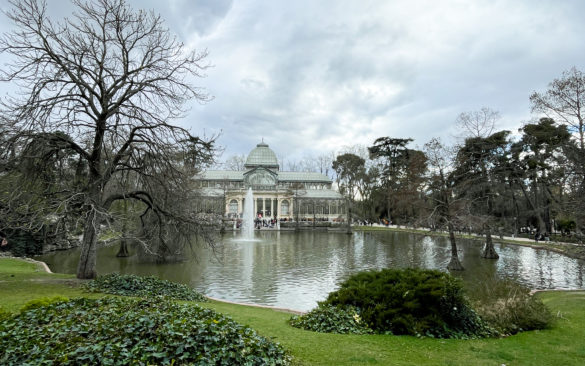This is my gluten-free travel guide to Madrid. I have been living in Madrid since January 2023. Here I really realized how difficult life with coeliac disease is in my home country (Germany) and how easy it is here. I don’t know how the general public in Spain knows what coeliac disease is. But because of that, you don’t have to explain anything in the restaurant, just order and say “Soy celiaca/celiaco” (I have coeliac disease).
There are also an incredible number of 100% gluten-free restaurants and bakeries in Madrid. Probably more than in the whole of Germany.
I would like to introduce you to the city of Madrid on the one hand and the completely gluten-free restaurants and bakeries on the other. But also, the restaurants that prepare coeliac-friendly, gluten-free food but are not completely gluten-free. But in short, the best way to get to know Madrid is through the culinary route.
Nevertheless, here I share the places you must see on a city trip to Madrid. If you want to go directly to the tips for gluten-free restaurants in Madrid, click here: Gluten-free travel guide for Madrid.
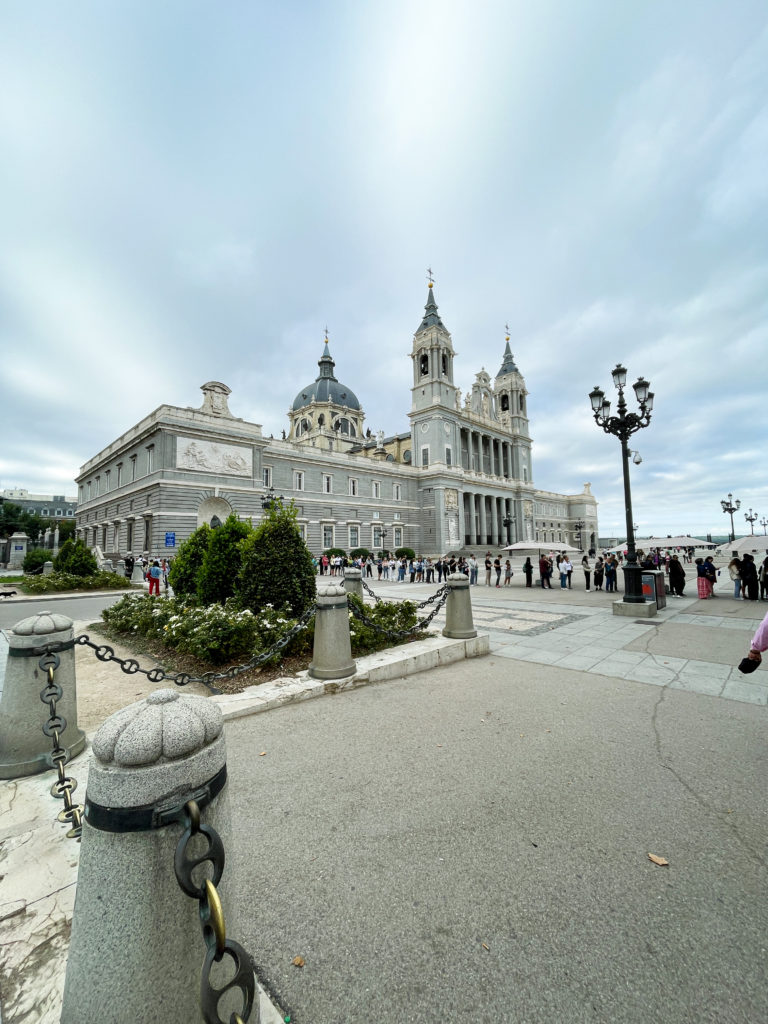
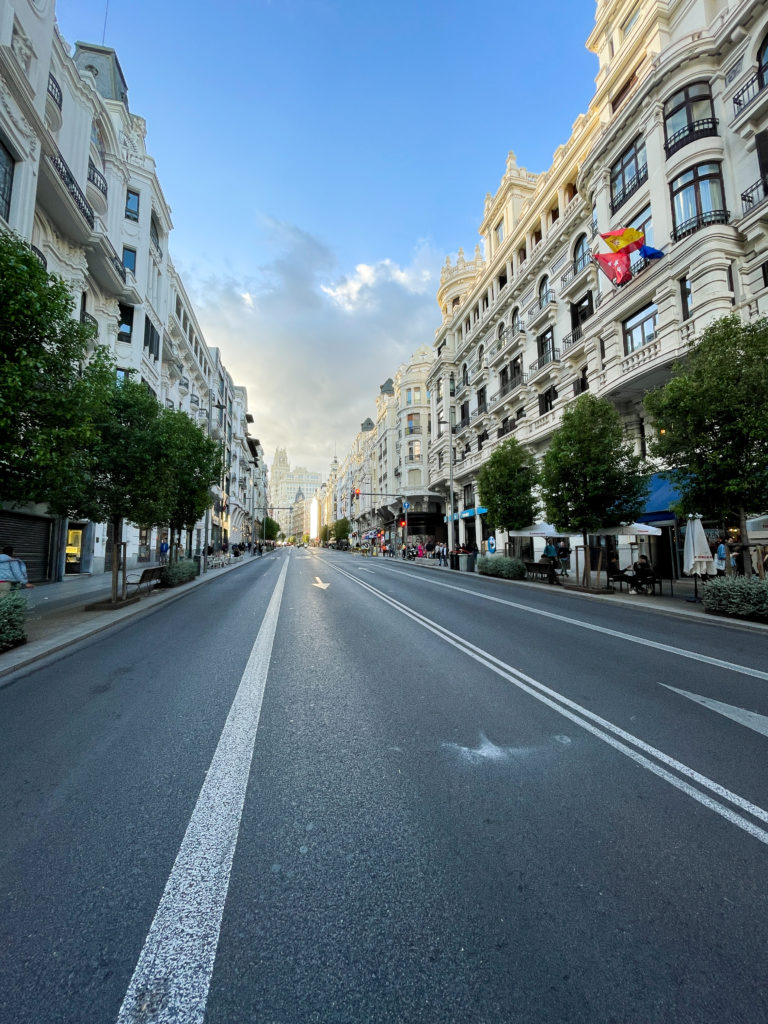


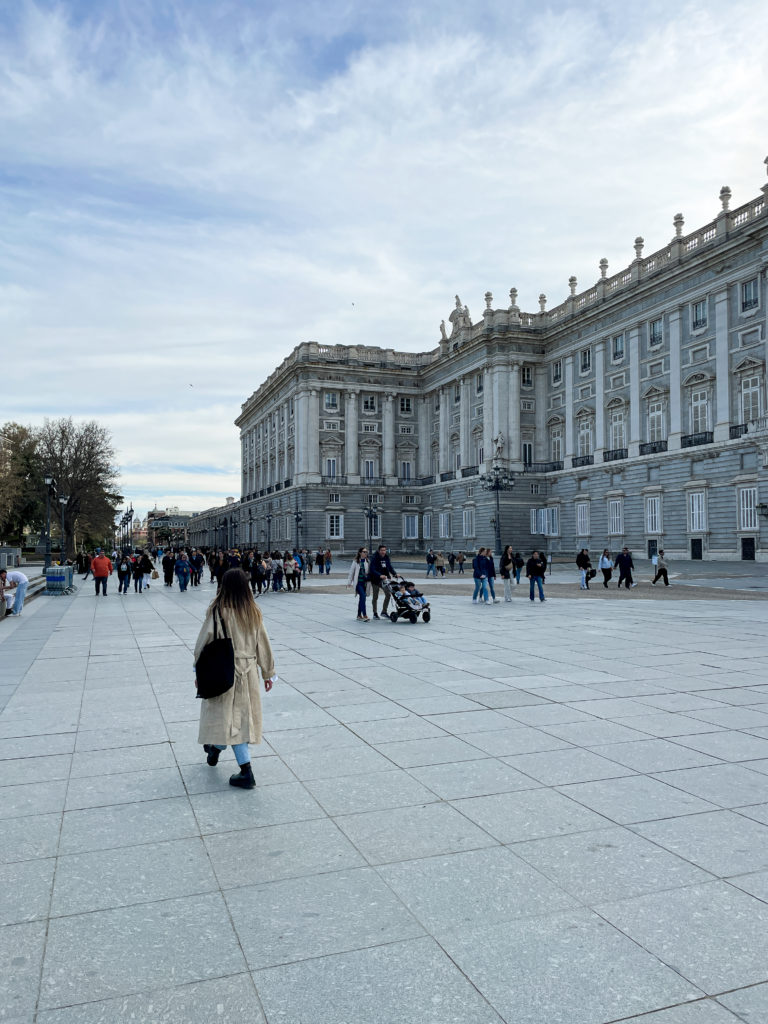
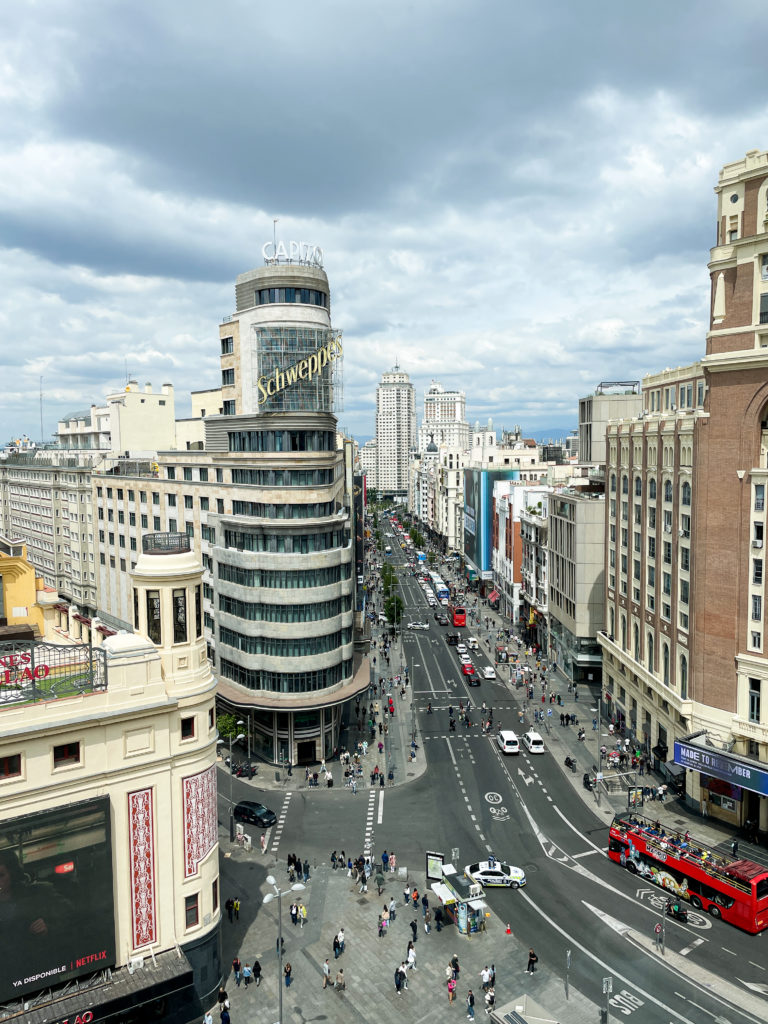
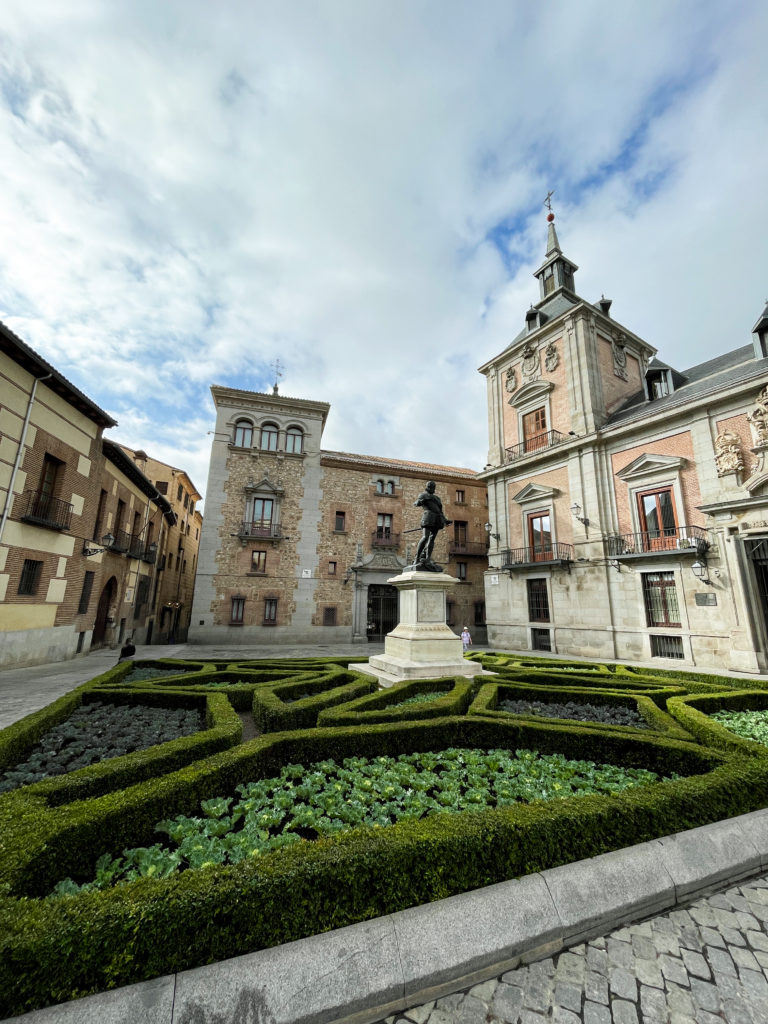
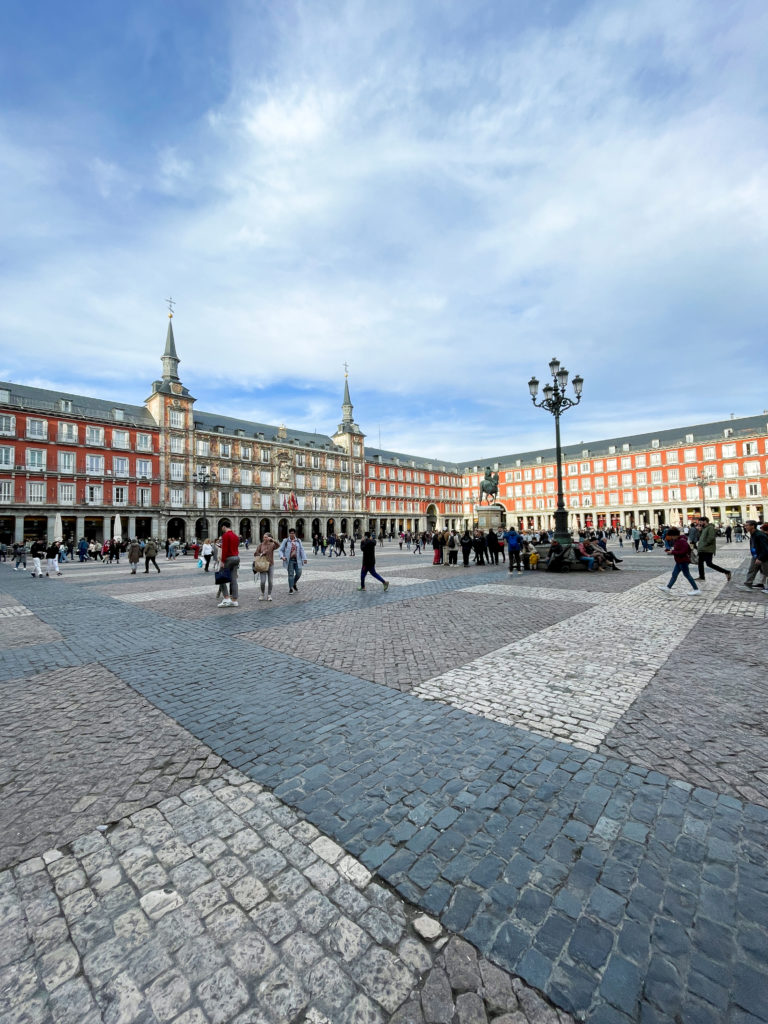
Highlights of Madrid
- Palacio Real (Royal Palace)
- Catedral de Nuestra Señora de la Almudena
- Plaza de la Villa
- Mercado de San Miguel
- Plaza Mayor
- Gran Vía
- Parque del Buen Retiro with Palacio de Cristal
The Palacio Real does not have a changing of the guard ceremony or any interesting looking guards as in other countries with royal families. If anything, the palace looks a bit dated. This is probably because the royal family has not lived there for several years. On the other hand, you can take a guided tour of the interior. Next to the royal palace is the Catedral de Nuestra Señora de la Almudena, which from the outside looks almost more sublime than the royal palace. On the square in front of the cathedral you get a wonderful view over Campo del Moro to Casa del Campo.
The Mercado de San Miguel is one of the most beautiful and oldest markets in Madrid. Every neighbourhood has a market and it’s almost always worth taking a quick look inside. But the Mercado de San Miguel is special: Existing since the 20th-century, it is a freestanding building with high windows and the tourists stream in. Some of the prices are overpriced, but others are normal. It is a struggle to get a table. But it is also a real pleasure to watch the hustle and bustle from a hard-won table, enjoying the most delicious wines, with oysters, pulpo, tasty jamón and other tapas.
The Plaza de la Villa is a small but beautiful square. What makes it special is that the Plaza is surrounded by three important buildings from three different centuries: the former town hall in Baroque style from the 17th century, the Casa de los Lujanes in Gothic style from the 15th century and the Casa de Cisneros from the 16th century in Plateresque style (Spanish Baroque).
The Plaza Mayor is also an absolute tourist magnet and that’s why it’s here in the list. You should have seen the square, which has existed since 1619 and is surrounded by old buildings. Everything from bullfights to executions with the garrotte took place in this square. However, you should treat yourself to dinner or coffee elsewhere, unless you want to leave your fortune in Madrid.
The Gran Vía is, as the name suggests, a large street bordered by Belle Époque facades. It’s a great place for shopping, as long as you don’t mind the crowds. Otherwise, you can simply make your way through the hustle and bustle, because you should have seen the great facades. And in some of the magnificent houses there is also a roof terrace where you can drink a coffee with a great view. You should also go into the various side streets, as there are great cafés or small boutiques hidden away without crowds of people (more northern). If you walk south at Callao or at the level of the Gran Vía metro station, you pass more shops and arrive at the Puerte del Sol, Madrid’s city centre.
El Retiro is the place where the Madrileños flock for walks and outdoor sports courses, especially at weekends. The park invites you to stroll, just sit and read a book or even go boating. In the upper part there is an artificial lake where you can go rowing. There you will also find the magnificent Monumento Alfonso XII. Further south, the Palacio de Cristal stands in an absolutely idyllic landscape.
Madrid also has some of the best art collections in three big museums: Museo del Prado, Museo Thyssen-Bornemisza and Centro de Arte Reina Sofía.
But as I mentioned before, it’s best to get to know Madrid through cafés and restaurants.

Gluten-free dictionary for Madrid
But first, here’s a little linguistic support to make it even easier to find your way around culinary Madrid:
- I have coeliac disease = tengo enfermedad celíaca
- I am a coeliac = soy celíaca / celíaco
- I cannot eat gluten = no puedo comer gluten
- For me, everything must be gluten-free = Para mí, todo tiene que ser sin gluten.
- …also without traces of gluten = incluso sin trazas de gluten.
- Is this also possible gluten-free = ¿Es esto también posible sin gluten?
- Is this gluten-free? = ¿Esto es sin gluten?
- Wheat = trigo
- Barley = cebada
- Rye = centeno
- Spelt = espelta
- Oats = avena
- Barley malt extract = extracto de malta de cebada
- Baking and pasta products = productos de panadería
- pasta = pasta
- Pizza = pizza
- Bread = pan
- rolls = panecillos
- Cakes = pasteles
- Beer = cerveza
- gluten-free beer = cerveza sin gluten
- beer from the tap = cerveza de grifo
- flour = harina
- millet = mijo
- rice = arroz
- potatoes = papas
- quinoa = quinua
- To go = para llevar
- The bill please = La quenta por favor
- by card = con tarjeta
- with cash = con efectivo
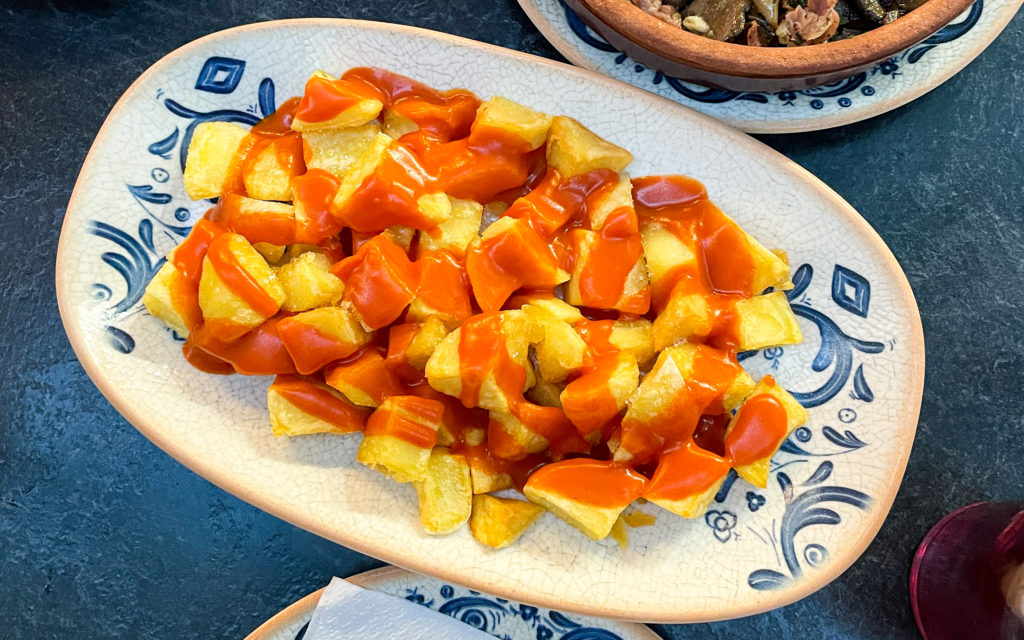
Typical Spanish dishes
Spanish Tortilla
The Spanish tortilla is classically only made of potatoes and egg, usually fried in oil and, depending on the tortilla, also has onions, vegetables or similar in it. But it is usually thickened by the egg and thus prepared without flour.
Patatas Bravas
Patatas Bravas are deep-fried potatoes with a red, sometimes spicy sauce (Salsa Brava). Here, of course, you have to ask about the traces, because of the deep fryer. Classic restaurants also don’t put anything on the potatoes, but even here there are sometimes places that turn the potatoes in baking powder.
Paella
Paella actually comes from Valencia and is traditionally cooked with chicken, rabbit and snails, white and green beans and a little saffron. In the south, it is nowadays made more with fish and seafood. In Madrid, you can actually find everything. Here, too, no flour is classically used, nor is cheese or other dairy products, but it is thickened by a reduction. In addition, a classic paella is not mushy, but rather crunchy. You can recognize a good paella by the fact that you have to wait for it and not it for you. In other words, a restaurant that already has the paella ready is a tourist trap.
Spanish tapas
Tapas are typical in Madrid. Classic tapas are small food snacks that come with an order of wine or beer that, depending on the restaurant, you can get your full dinner without ordering a meal. Nowadays, this is no longer the case everywhere and people order tapas that are a little larger. Either way, tapas are usually shared and several are ordered together.
The origin of tapas
There are different stories about the origin of the word tapas. Unfortunately, I don’t know which one is true. But here I’ll share a few with you:
King Alfonso X of Castile was recovering from an illness and therefore ate small dishes with his wine. When he was well again, he decided that wine needed to be accompanied by a snack, the “tapa”.
Personally, I find it more believable that tapas derives from “tapar” which means “to cover” and when King Alfonso XIII was drinking a beer and was annoyed by a fly, he asked for something to cover a beer. The waiter / bartender then gave him some ham (jamón), but King Alfonso XIII ate the ham and thus the snack to accompany the beer was born.
Another story says that Philip III wanted to reduce drunkenness by a decree and thus alcoholic drinks could only be served with a small snack.
Typical tapas are:
- Patatas Bravas (potato wedges with spicy tomato sauce).
- Tortilla española (Spanish tortilla)
- Croquetas (croquettes)
- Pimientos de Padrón (small green peppers fried in oil and rolled in salt)
- Boquerones (anchovies with various marinades)
- Aceitunas (olives)
- Chorizo, Jamón, Ibéricos y queso (various Spanish sausages, hams and cheeses)
As you can see, the classic and most common tapas in Madrid are naturally gluten-free. Of course, you have to ask everywhere again, especially because of the traces. The croquettes, of course, are also more likely to contain gluten. However, there are some places where croquettes are also gluten-free in Madrid.
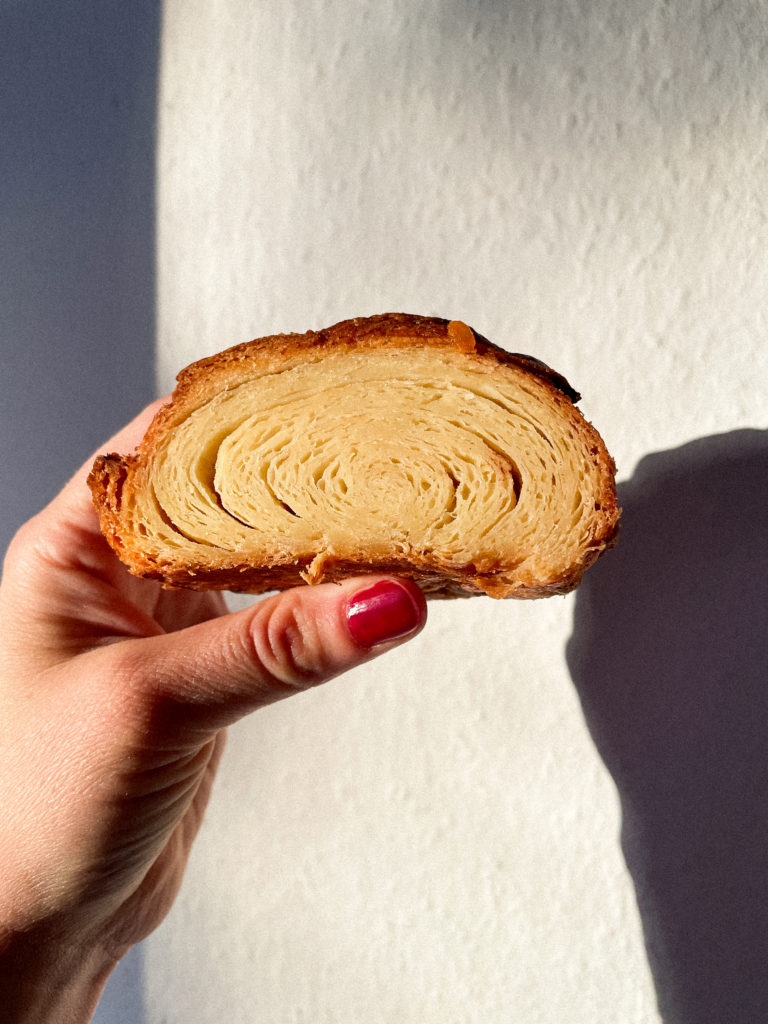
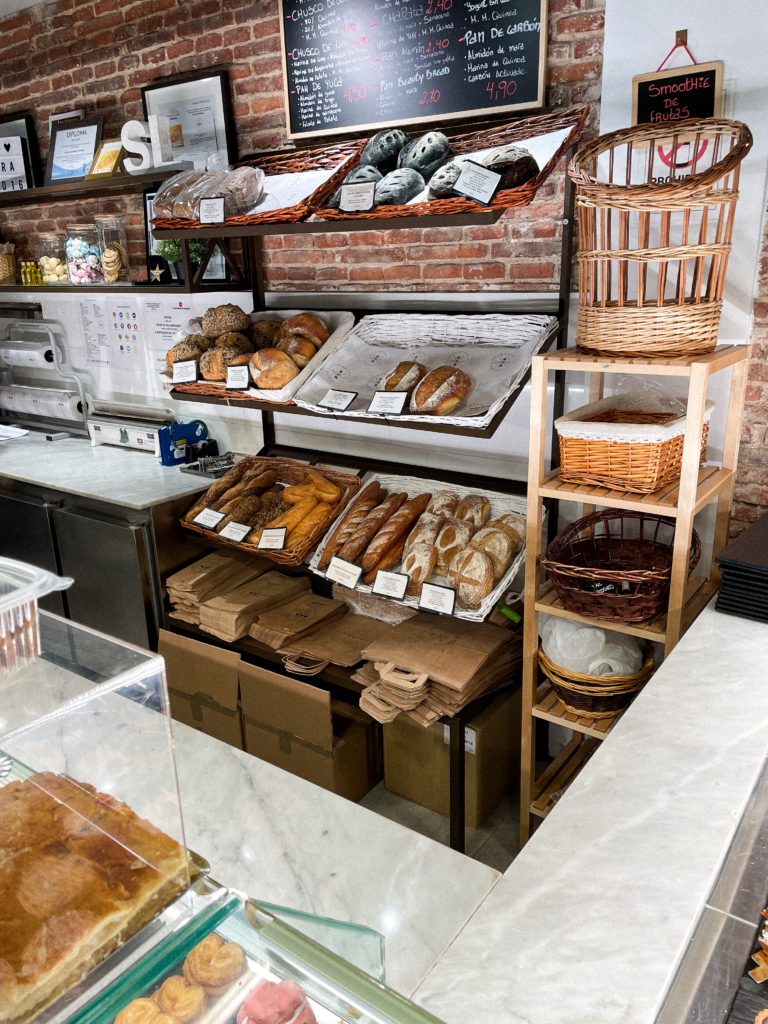
Completely gluten-free bakeries in Madrid
Sana Locurna
In my opinion, this place has the best gluten-free croissants in Madrid. You can have a great breakfast and the price-performance ratio is great. The breads are also very tasty, as are the empanadas, which can also be heated.
0% gluten
Another super tasty bakery. Here you can also eat pasta, pizza and other hot food. The breads here are also very tasty.
Celicioso
This is a chain and there are several in Madrid. Here, too, you can get burgers, pizza and also muffins and cakes. The price-performance ratio is not so good here. The pancakes for breakfast were very tasty. the cakes or muffins, too. However, the salads, toasts, etc. are often from the refrigerated counter and then just put on a plate instead of being freshly prepared. I also find the bread here not quite as tasty as at other completely gluten-free bakeries in Madrid.
La Oriental
La Oriental is a chain in Madrid, but only one place is completely gluten-free. The gluten-free bakery is right next to a gluten-containing branch on Calle de Ferraz. So be careful which door you go in. Here you’ll find more classic treats from Spain.
Leon the Baker
Leon the Baker is just a small stall outside the entrance to the supermarket in Corte Inglés in Goya. The rolls, as well as breads, are very tasty. I can’t resist the lemon muffin either. As delicious as the products are, it’s not so much an invitation to linger as a take-away.
Sugereta Sin Gluten
Sugereta has the best gluten-free cheesecake. The bakery is located in the Mercado de la Cebada, but its opening hours differ from those of the market hall, so that I often found the door closed. Also, it’s better to pre-order and pick up here, as they don’t make as much for without pre-ordering.
LAIB
This is a very small bakery, for pick-up only. The ginger cookie as well as the cinnamon buns are mega delicious. I haven’t tried anything else yet, but everything looked very tasty.
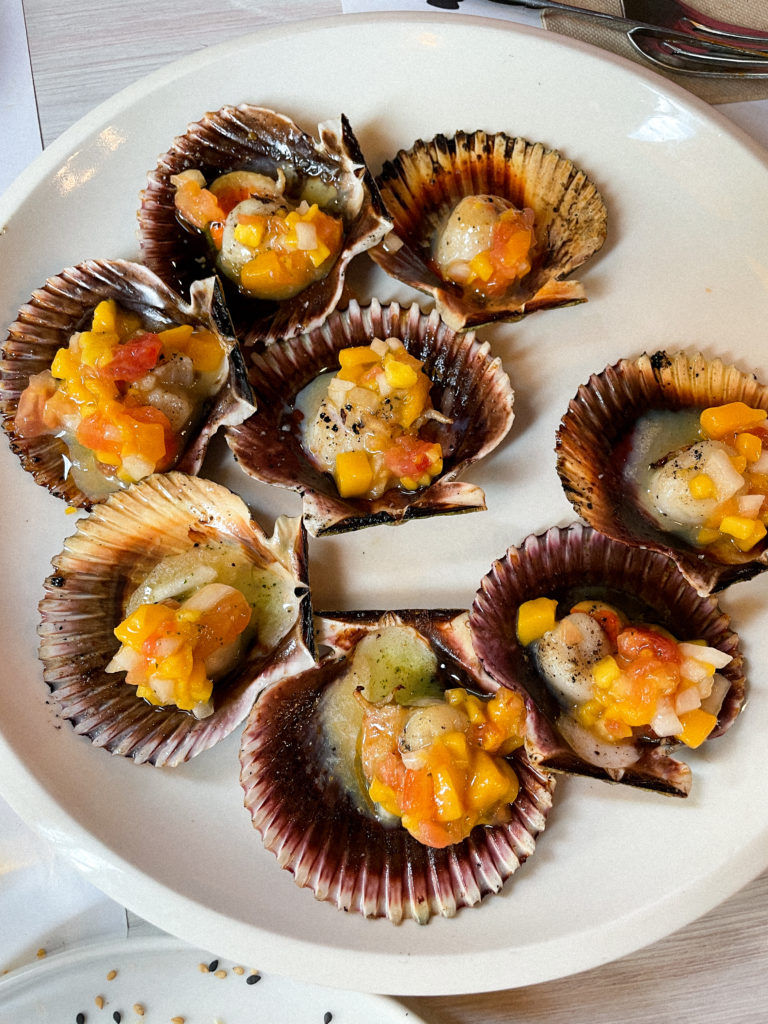
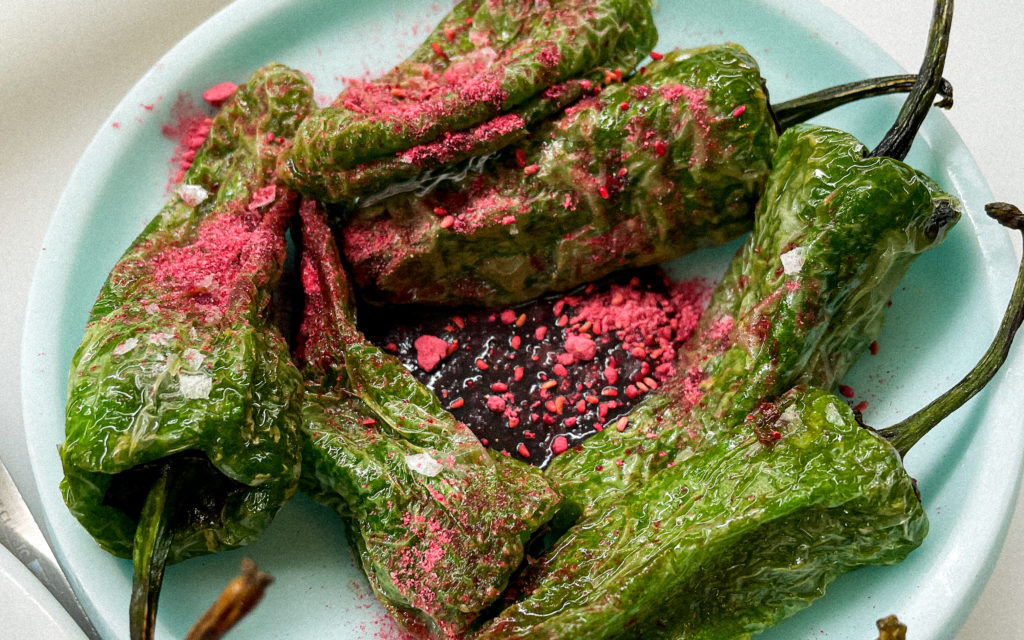
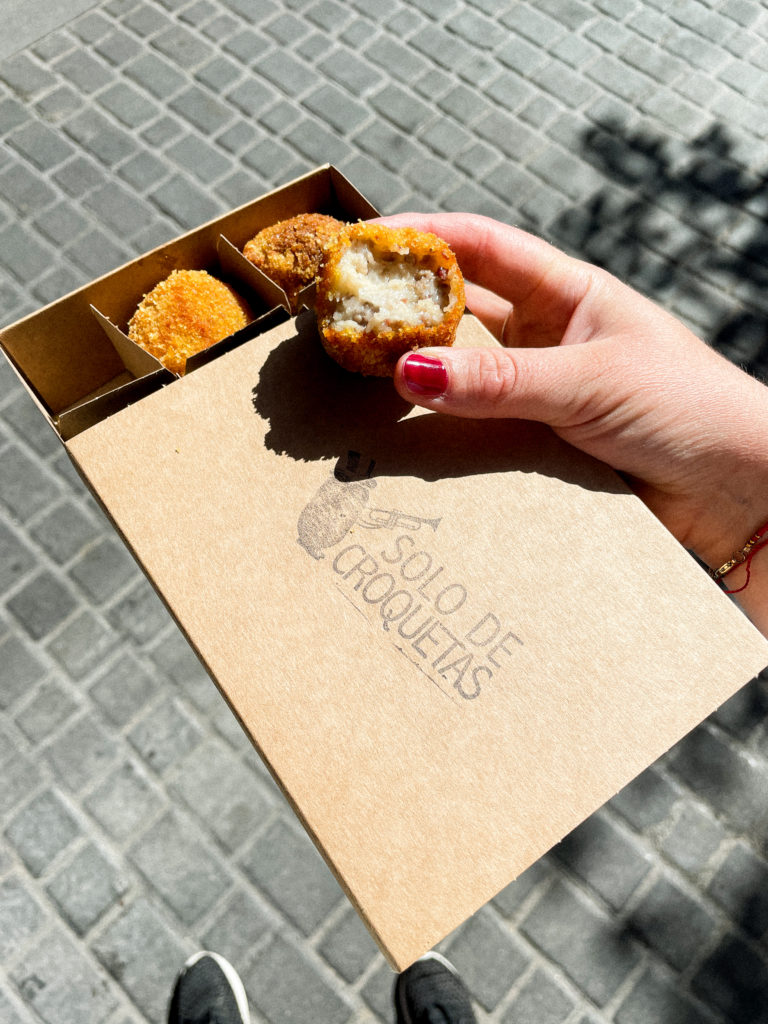
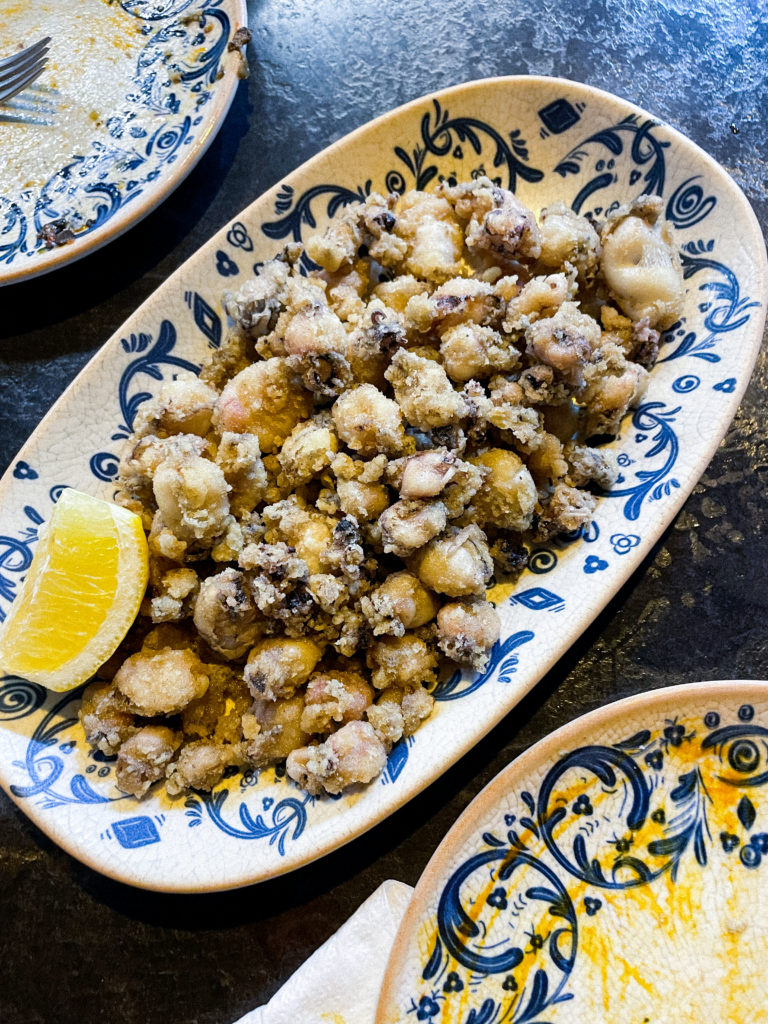
100% gluten-free restaurants in Madrid
La Lalina
This is a tapas bar where you can get all the typical tapas in a gluten-free version. The tapas are very tasty and you don’t have to worry about the traces here. My favorite was the artichokes.
La Tape
They have a few of the classic tapas here, but also more unusual but even more delicious tapas. My favorites are the egg-plant and the scallops.
Solo de Croquetas
This place only serves croquettes. There are vegan croquettes, with fish, with meat or even sweet ones. All are gluten-free, so you don’t have to ask about the traces either. But beware, this is also a chain and only the branch on Calle de Echegaray is gluten-free.
Grosso Napoletano
This is a pizzeria. So good that even my Italian friends have said that this tastes like home. I also love the pizza there. Plus, there are combinations that I haven’t seen anywhere else before. Here, too, you have to be careful. Only one branch of this chain is completely gluten-free (Calle de Fernando VI). In addition, you usually don’t get a table (no matter what time) without a reservation.
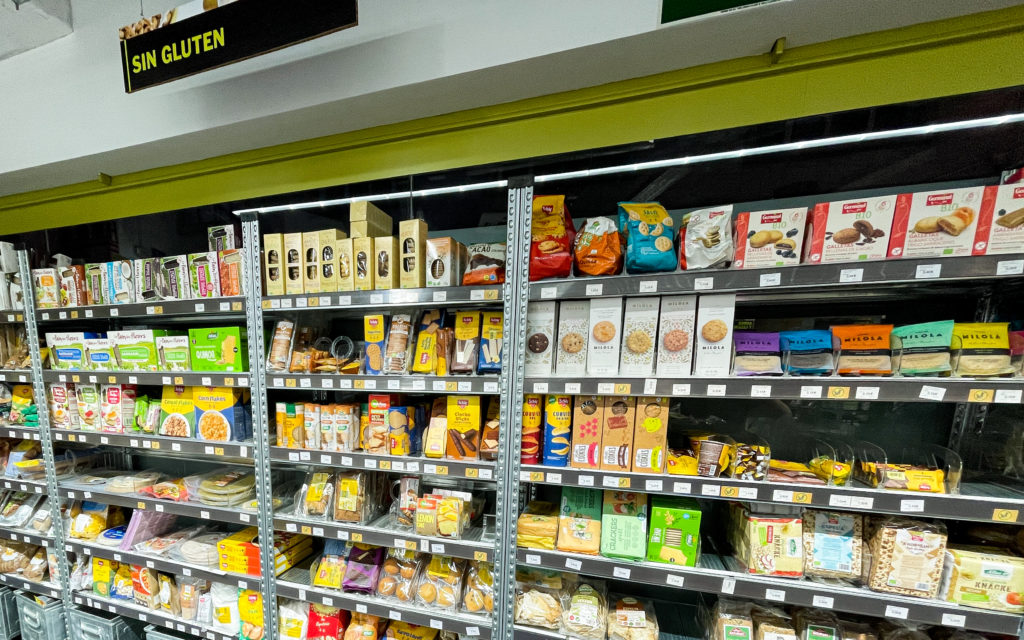
Gluten-free food shopping in Madrid
Maná Productos Sin Gluten
A small but nice supermarket with gluten-free products from all over the world, but mainly from Spain and Italy. There are products here that I haven’t seen anywhere before, such as sandwich ice cream and so many pasta shapes that a pasta lover’s heart swells.
In Madrid, gluten-free products are usually sorted by shelf and not on a allergy shelf like in Germany. This means that you sometimes have to search and it is easier to overlook products that are gluten-free.
Corte Inglés
Corte Inglés has a lot of gluten-free products. Especially at Corte Inglés in Goya, there is a huge section for dietary products, where you can find everything at a glance. However, gluten-free products are also sorted under the gluten-containing products.
Carrefour
Carrefour also has a lot of gluten-free products. There are even some gluten-free churros in the freezer. Carrefour Express also has a small selection, but it’s more like crackers.
Mercadona, BM or Alcampo
All three have gluten-free products, but you have to look for them. They tend to have gluten-free pizza, gluten-free pasta and crackers. I rarely see gluten-free bread.
Ahoramas
Here you can find various gluten-free flours, gluten-free pizza and some gluten-free crackers and biscuits.
Dia, Lidl, Aldi, SuperCor
These supermarkets also have gluten-free products here and there, but you have to really look for them. At Lidl I once saw gluten-free muffins, but no gluten-free bread (different to Germany). In addition, Lidl and Aldi are rather cheaper supermarkets in Germany, but in Spain they are rather expensive compared to the other Spanish supermarkets.
This is a first insight. And remember these are only completely gluten-free places. There are many more, mega delicious restaurants that are 90% gluten-free, that know about coeliac disease and that I haven’t even listed here yet.
I’m also adding to the list regularly, so it’s best to keep checking back to see if there’s been an update.

